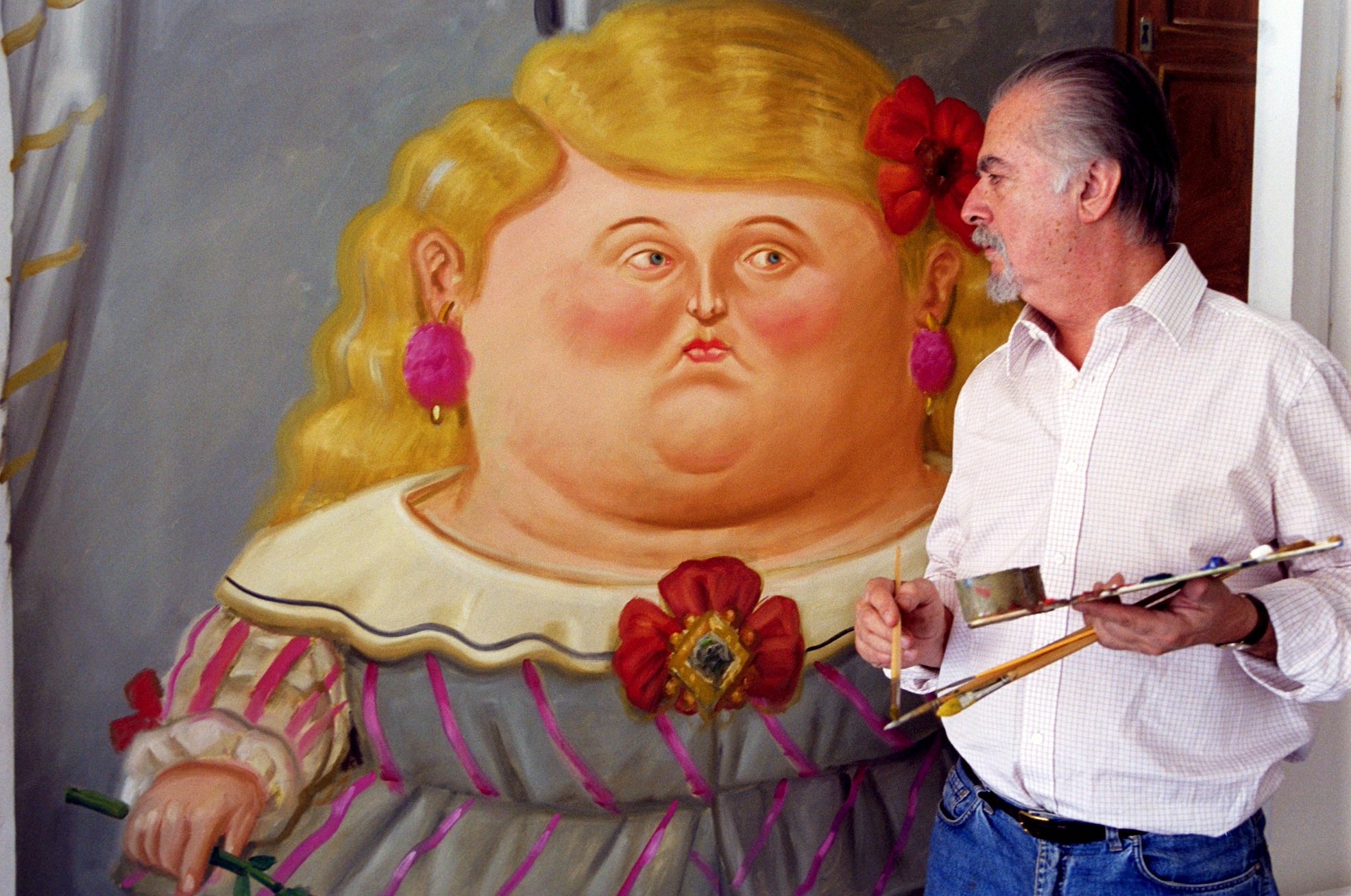I keep stumbling across Fernando Botero's work. The full-(and I mean full) figured nudes at the fancy mall that went up near my old place. The 23 sculptures of robust men, women, heads, dogs, cats, and horses in the plaza named after him in his hometown of Medellin, Colombia, outside a museum which devotes an entire wing to his work. That painting of the beefy baby pope that I've seen used online as a reaction image roughly 10,000 times, and which was not in fact created during the Renaissance but rather in 1964:

I do not usually notice a given artist so often. So what was happening here? Did I keep stumbling across Boteros in my life because they are in fact everywhere? (To some extent, yes. Botero was wildly successful commercially, to his detriment with many critics for a long time.) Or, rather, was I noticing Botero's work because it is without exception so damn noticeable?
Fernando Botero died on Friday at the age of 91, leaving behind a style so unique that it could never be mistaken for anyone else's. Boterismo is volume, all curves and rounded edges. Figures are cartoonishly plump, whimsical yet at the same time so sturdy that they assume a kind of fleshy monumentality. They make "Rubenesque" look heroin chic. They are delightful.

Botero was not rigorous in his method; he rarely did studies. He instead "transformed" figures in his mind, converting human dimensions into his stouter interpretations before ever putting brush to paper. If his technique was unorthodox, his expression had a historical basis.
“I studied the art of Giotto and all other Italian masters,” Botero once said. “I was fascinated by their sense of volume and monumentality. Of course in modern art everything is exaggerated, so my voluminous figures also became exaggerated.”
The solidity always felt to me like a celebration of the human form, not a mockery. When the same exaggerated rotundity was applied to a preteen Mona Lisa as it was to the crucifixion or abused Abu Ghraib prisoners, it emphasized the corporeality of all—and the dignity.
The native son of Medellin spent most of his life in Europe and the United States, but became by recognizability and ubiquity and sheer brute force one of the giants of contemporary Latin American art. It was not a seamless ascent; he still has haters. His commercial success and the superficially unserious nature of his figures led some critics to deride his work as kitsch, a sort of Colombian Kinkade. That feels unfair to me: Boterismo may be playful, but it's an ethos as considered and as intriguing as any. And if it's more accessible than most? Well, what of it? Doesn't the world have room for a style that lends itself to public art, and to instinctive, pleasurable reactions in its viewers? I am an art dummy, but I think if a work or a style makes me feel something, then it's done something. It can operate on other levels, but it doesn't need to. Sometimes it's nice to see a big chubby cat.

If Botero's work belonged to the world, his heart belonged to Colombia. He painted nostalgic scenes of its past. He depicted the results of the violence that beset the country for decades: one painting captures the aftermath of a car-bomb attack; another shows the death of drug lord Pablo Escobar in a hail of bullets on a Medellin rooftop. "Art should be an oasis, a place or refuge from the hardness of life," he explained. "But the Colombian drama is so out of proportion that today you cannot ignore the violence, the thousands of displaced and dead, the processions of coffins. Against all my principles I had to paint."
And sometimes the violence found his work. In downtown Medellin stand two identical pigeon sculptures. One of the two is twisted apart by a bomb planted at its base that killed 30 people in 1995.
"The painter of our traditions and defects, the painter of our virtues. The painter of our violence and peace," Colombia's president wrote upon the news of Botero's death. "Of the dove rejected a thousand times and placed on its throne a thousand times."
According to Botero's daughter, the man who painted from sun-up to sun-down every day was still at it in his workshop in Monaco as recently as last weekend. He couldn't do his traditional oil paintings anymore, she said, because he was too weak to stand and hold the heavy brush, but he was experimenting with watercolor. Even at 91, he was seeking new ways to illustrate the world he saw in his head.






